Making maple syrup
April 11th, 2012Tags: boiling, dan bouthot, maine, maple, maple syrup, mussels, sap, tree, wild food
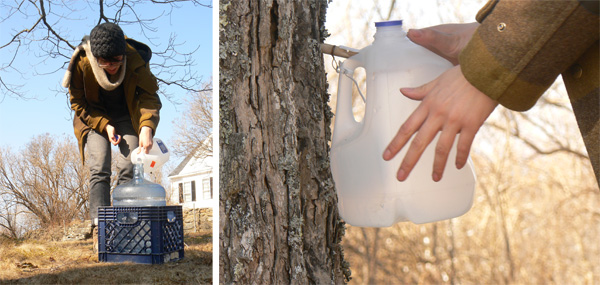
Before the incredible heat wave that swept the east coast, I went up to Deer Isle where we tapped maple trees with the inestimable Dan Bouthot. Some details follow.
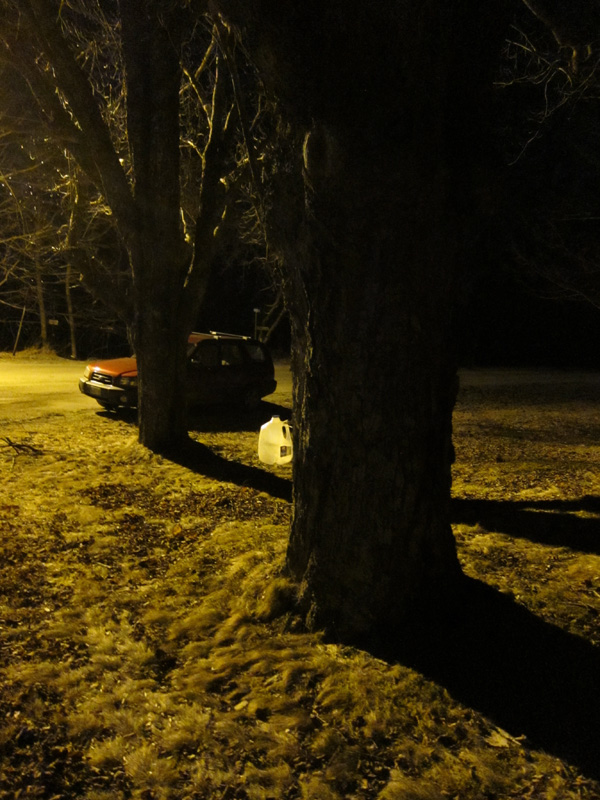
The phloem is the part of the stem that normally carries sugars around the tree, whereas the xylem carries water from the roots up. In between these two parts is the cambium, where the tree grows more phloem and xylem cells. However, when collecting maple sap, we are apparently collecting sugary water from the xylem, which is sending sugary water up to the canopy during freeze-thaw cycles throughout the course of an early spring day. I don’t really understand why there is sugar in the roots, even though I read this paper about sap flow. Maybe to prevent the roots freezing in the winter?
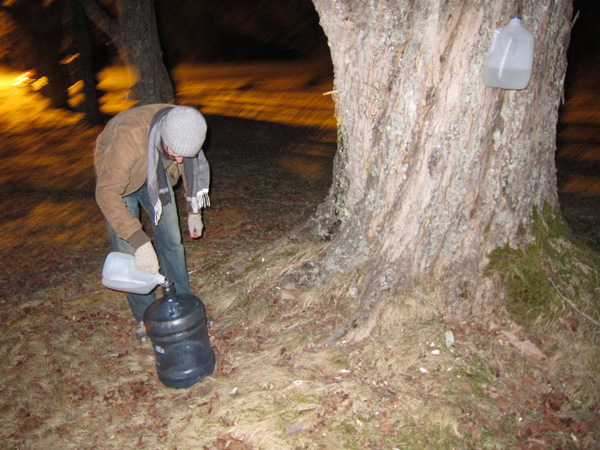
Dan uses little taps he made himself out of bamboo, with little notches for twist ties that hold up reused gallon jugs. You can also buy fancy premade ones though.
We tapped about 5 trees, and each tap produced about 2 gallons of sap a day. We picked it up around noon, and again in the evening. You have to boil the sap down around 15:1, depending on the conditions around the trees, to get maple syrup. We started to measure the sap content with a hydrometer, but then we broke it. Whoops.
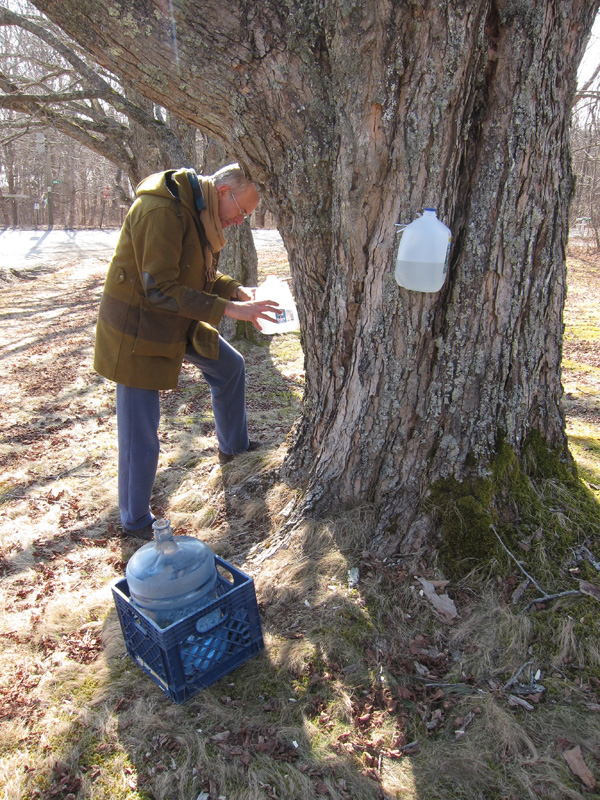
This is my dad ^ collecting sap. Yup, this is a full team effort.
Jeff took it upon himself to chop the wood for the sap-boiling down fire. And with ‘took it upon himself’, I mean gleefully launched himself into a chopping frenzy the second we got to Dan’s. If you ever need someone to chop wood, drop him a line. He’d be delighted.
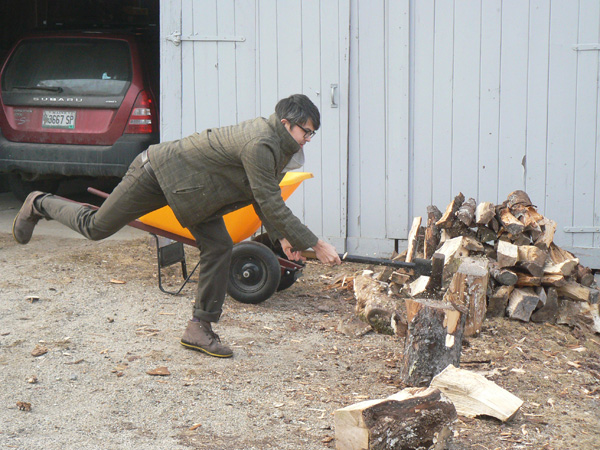
We had 2 pots going on our fire, one large pot, and one hotel pan for quick evaporation which we would refill from the big pot. Throughout the course of the boiling, we adjusted the fire pit a bit to maximize heat transfer, but it wasn’t exactly optimal. Next time perhaps no cinder blocks.

Since we were boiling with spruce wood as our fuel, the final maple syrup has a nice spruce smoke flavour. So nice, we decided to also barbecue some mussels we foraged earlier on the flames. The most delicious thing, smoky barbecued mussels. I’ll write another post about foraging mussels again sometime soon.
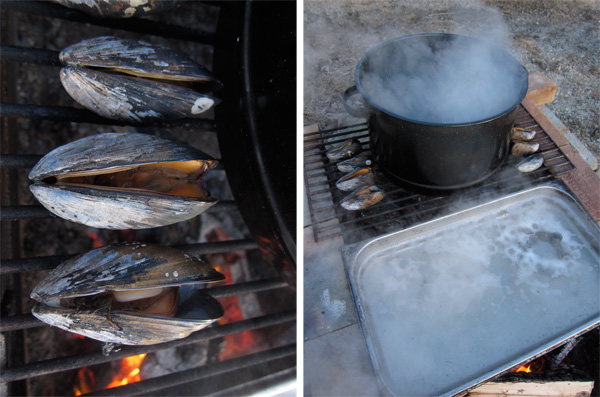
While boiling, Dan recommends skimming off any scum that forms on the surface. This is to maximize evaporation area, so that your boiling down goes quicker.
The last bit of boiling we did at home on the stove. You can monitor the boiling temperature of your syrup to determine when it is done (this is what big maple syrup houses do, I believe), or like us, you can watch its boiling behaviour to figure it out.
Here is syrup that is not yet ready boiling:
Once the syrup is ready, the surface starts to look oily and it starts to boil up, like milk does:
It’s important to watch the maple syrup during this last stage, or you might lose it all to the fire.
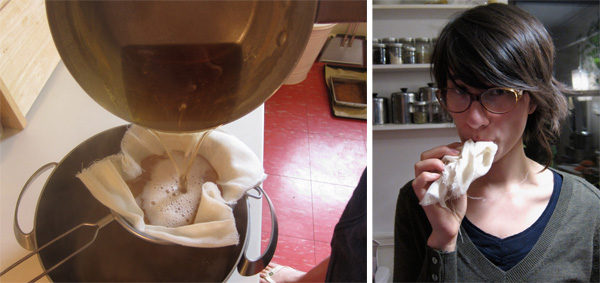
Then I strained the syrup through 8 layers of cheesecloth, and am keeping it refrigerated in a flip top bottle that previously contained pink lemonade. The cheese cloth was a pretty tasty semi-lollipop afterwards.

There are red maples near my apartment, I wonder if MIT will let me tap them next spring. It seems that they might be quite delicious as well, just not as sugar-rich.

